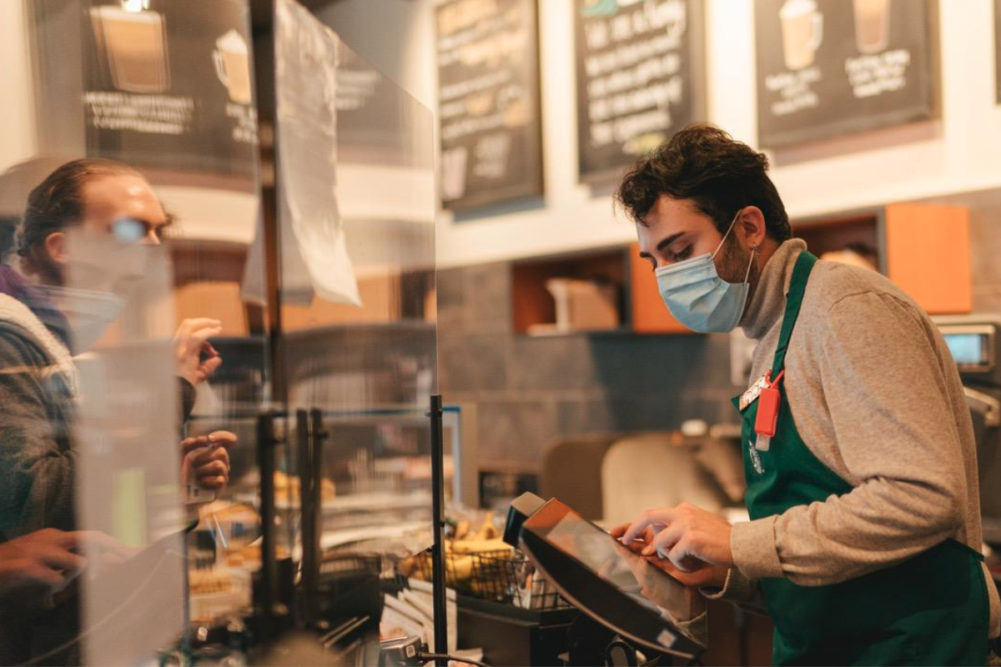SEATTLE – Fiscal 2021 is forecast to be a bounce-back year for Starbucks Corp. When things will get interesting is fiscal 2022 and beyond.
“We’ve already guided to a significant rebound for fiscal ’21 as we lap the extreme impacts of COVID-19 that we experienced in fiscal ’20,” said Patrick J. Grismer, chief financial officer, during Starbucks’ Dec. 9 virtual investor day. “… Fiscal ’22 will be outsized for certain metrics relative to our ongoing expectations as we lap this year’s recovery curve.”
The company’s global store portfolio is expected to grow 6% annually starting in fiscal 2022. Store growth in the United States will be approximately 3% while China is expected to grow in the low teens, according to the company.
Citing data from Euromonitor, Kevin R. Johnson, president and chief executive officer, said the coffee market will reach $450 billion in sales globally by 2023.
“We also believe businesses like ours that adapt rapidly to changing consumer preferences and behaviors will grow much faster than the market,” he said. “As a premium and highly differentiated brand, our ability to grow share in this large and growing coffee market is at the core of our unwavering optimism about the future of Starbucks.”
Company management is focused on shifts in consumer behavior that are expected to manifest in the wake of the pandemic. The first is consumers who have been social distancing during the past year will seek community connections and experiences as a vaccine is distributed.
“Second, customers will continue to seek experiences that effortlessly fit their lifestyle,” Mr. Johnson said. “In many ways, that means more convenient on demand experiences with curated options and Starbucks is focused on meeting customers where they are. That might mean choosing a favorite order on your mobile app as you pass-through a Starbucks pickup store or having your barista greet you by name with your customer order at the drive-thru or curbside.”
Mr. Johnson said the consumer behaviors he identified are not new but are emerging stronger and are being amplified in the current environment.
“And Starbucks is uniquely positioned to lean into and benefit from these changes in customer behavior,” he said. “And we see a clear path to modernize and sharpen our approach in ways that strengthen our leadership advantage, and we will continue to meet customers on their terms.”
In the United States, changes will include greater use of artificial intelligence (AI), expansion of Starbucks’ cold beverage platform and the growth of new store formats like those dedicated to pick-up.
Rosalind Gates Brewer, chief operating officer and group president of Americas, said AI will do many things for Starbucks, including make relevant recommendations to customers, manage inventory and improve speed of service. AI is being used as part of an initiative to introduce two-lane drive thrus at some stores.
“The more we leverage AI and deepen our digital relationships, the more we can drive frequency,” she said.
Ms. Gates Brewer said Starbucks’ cold beverage platform has grown nearly 45% during the past four years. A cold beverage innovation launching this spring is the Shaken Iced Espresso, which is formulated with expresso, brown sugar and oat milk, and is shaken to create a smooth texture.
“It speaks to how we’re meeting the generational shift in customers’ taste,” she said. “… Like the rest of our cold platform, we believe this new drink will resonate all year across all day parts.”
Starbucks also is testing low- and no-sugar platforms, Ms. Gates Brewer said. As the innovation evolves, customers may one day have the ability to customize the sweetness of the beverages they buy.
By 2023, drive-thru, pickup and new store formats will expand to nearly 45% of Starbucks’ US portfolio.
“Since opening our first Starbucks pickup just over a year ago, we’re accelerating this format and others focused on convenience across the US,” Ms. Gates Brewer said. “We know the same Starbucks customer has different experiences depending on where they are in their day. And we’re supplementing our traditional cafes to offer a range of formats that best cater to their needs.
“For example, a lot of professionals who work in cities also live in cities. And we may benefit with the location closer to their home than their office in a commercial district. We’re also seeing suburban drive-thrus cater to people working from home who visit us for a break in their day.”
In fiscal 2021, Starbucks is guiding non-GAAP earnings per share (EPS) in a range of $2.70 to $2.90. The company expects fiscal 2022 to be a year of “outsized EPS growth” of at least 20%. In fiscal years 2023 and 2024, Starbucks sees EPS growth rates in a range of 10% to 12%.
“While the pandemic temporarily disrupted our business, it has served as a catalyst for more rapid innovation and transformation to position Starbucks for an even brighter future, giving our customers ever-increasing opportunities to enjoy a premium experience whenever and wherever they are,” Mr. Grismer said.





